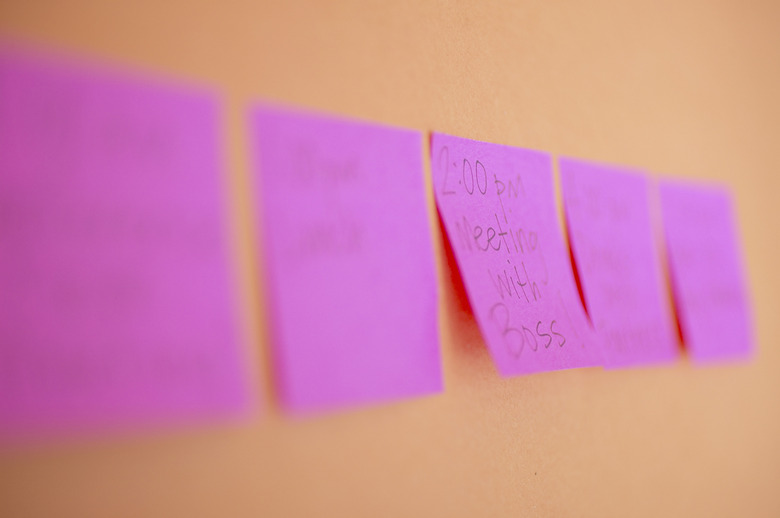How To Remove Sticky Residue
Things Needed
-
Wet wipes
-
Microfiber cloth
-
Water
-
90-percent isopropyl alcohol
-
Cotton swab
-
Waterless hand cleaner
-
Stain remover
-
Laundry soap
-
Dry-cleaning solvent
-
Liquid dish soap
-
White vinegar
-
Cloth
-
Sponge
-
Small bowl
-
Baking soda
-
Soft-bristled brush
-
Towel
Sticky residues left by tape, grease or food may be found on a variety of surfaces in your home. If the spots are caught right away, most sticky residues easily are cleaned with a bit of soapy water. However, sticky spots left for a period of time can be challenging to remove. The best method to remove sticky residues depends on the material you're cleaning.
Electronics
Step 1
Turn off and unplug all electronics before you begin to clean, to avoid electrical shock.
Step 2
Remove surface grime and sticky residues from electronics casing using a wet wipe. Do not clean the electrical components or exposed wires with the wet wipe; only the cases that house these components.
Step 3
Wipe surface dust from LCD screens with a dry microfiber cloth. A paper towel or an old rag is too abrasive for screens.
Step 4
Dampen the cloth with water and add a few drops of 90-percent isopropyl alcohol. Wipe sticky residue from screens and other hard surfaces.
Step 5
Unplug keyboards, and DVD or CD players. Gently shake out debris.
Step 6
Dip a cotton swab into some alcohol and gently rub away sticky residue from the keys or controls. An alcohol-dampened swab also can be used to lift dirt from keyboard crevices and remote-control buttons.
Fabrics
Step 1
Scrape off excess residue from fabrics such as curtains, clothing and upholstery using your fingernail or a blunt edge such as a spoon.
Step 2
Rub waterless hand cleaner into the remaining residue on washable fabrics with your hands, then gently rub your hand over the residue to roll off the bits of adhesive.
Step 3
Apply a prewash stain remover to stubborn residue on fabrics and leave it for the time recommended on the label.
Step 4
Place the fabric item into the washing machine and launder as usual.
Step 5
Sponge residue on upholstery and carpeting with a cloth dampened with dry-cleaning solvent.
Step 6
Blot the residue with a dry cloth until the solvent is absorbed. Continue applying the solvent and blotting it dry until the residue is gone.
Step 7
Mix 1 tablespoon of liquid dish soap and 1 tablespoon of white vinegar into two cups warm water.
Step 8
Sponge the solution onto stubborn carpet residues. Blot with a dry cloth to absorb the solution and the sticky residue.
Step 9
Apply cold water to the treated area, then blot it dry. Reapply solvent to remove if any residue remains.
Walls, Trim, Doors and Cupboards
Step 1
Wipe the surface with soapy water to remove surface dust and debris. Rinse with clean water.
Step 2
Dampen a sponge with vinegar and scrub the sticky residue from the surface. Rinse with clean water to remove the vinegar.
Step 3
Remove stubborn residues by mixing equal parts baking soda and water to make a thick paste. Add more baking soda if necessary to make a paste thick enough that it won't drip down vertical surfaces such as cabinets and walls.
Step 4
Apply the paste to the sticky residue using a sponge or a clean cloth. Make sure the paste fully covers the residue.
Step 5
Leave the paste to dry, then scrub the area with a soft-bristled brush dampened with water.
Step 6
Rinse the surface with clean water to remove all traces of the paste. Reapply the paste to remove all traces of the sticky residue that remain.
Tip
Removing hardware from cabinets and furniture and soaking them in a soapy water solution sometimes makes cleaning sticky residues easier. Wipe the hardware with a damp cloth, rinse, then dry each piece before reinstalling.
